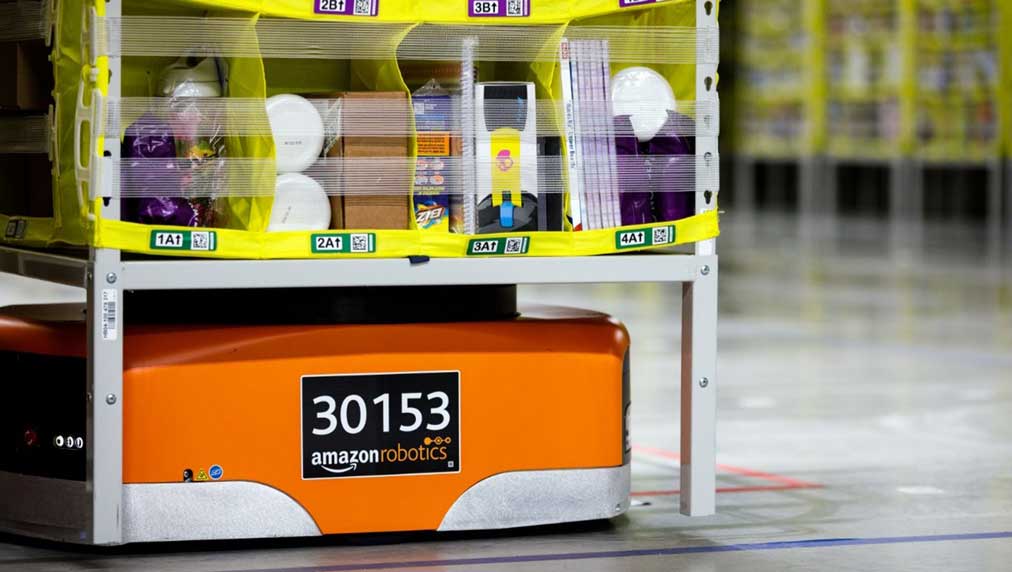The invasion of robots into warehouses, factories and retail stores will accelerate over the next few years as companies seek to hone their productivity and improve customer service, research firm IDC predicts.
X
By 2021, 60% of the world’s 2,000 largest companies will have deployed autonomous mobile robots, IDC analyst John Santagate said. These smart machines will increase productivity by automating material movement within operational processes, he said.
“The market for autonomous mobile robots today is expanding quite rapidly,” Santagate said in a webcast. “These types of devices have already proven to add value in areas such as e-commerce order fulfillment or in the warehouse, autonomously moving pallets around.”
IDC made its annual predictions for the worldwide robotics industry on Tuesday.
E-commerce leader Amazon.com (AMZN) has more than 100,000 robots at over 26 order-fulfillment centers worldwide. Amazon’s increased use of robots in its warehouses has translated into fewer temporary workers needed for the holiday-season rush this year, Citi analyst Mark May told CNBC earlier this month.
One reason that retailers and logistics companies are ramping up their use of automation is because the surging demand for labor has outstripped the number of available workers.
“Part of what’s driving this is the current state of labor in the market,” Santagate said. “There is a labor deficiency.”
Robots Strolling Retail Store Aisles
IDC also predicted a growing use of robots in retail stores.
By 2023, 25% of leading retail stores will have explored or deployed in-store robots to relieve human workers from repetitive tasks, IDC said. These robot deployments could increase worker productivity by up to 40%, it said.
Retail bots will take over mundane tasks that keep workers from helping customers.
“The retail store is a very customer-centric experience and should remain so,” Santagate said.
Walmart Tests Robots For Inventory Management
Walmart (WMT) is now testing robots that roam store aisles to check inventory and tell workers where to find goods, the Wall Street Journal reported last month.
Retail robots today can track on-shelf inventory, but fetching items is next, Santagate said.
Retailers are pursuing omnichannel fulfillment, he said. That can range from e-commerce warehouse fulfillment, online ordering with in-store pickup and even ship-from-store ordering, he said.
“Today ship-from-shelf is a costly and complex effort,” Santagate said. “Store associates are required to push shopping carts through the store to pick up items that are meant for an order. That means that they aren’t helping to service the customers that are in the store at that moment.”
Deploying bots in controlled environments like warehouses is a lot easier than putting them in settings like stores, he said. “The natural curiosity of shoppers” might interfere with the robots, he said.
European Companies To Boost Spending On Automation
In a report Wednesday, investment bank UBS forecast a surge in spending on automation, robotics and digitalization among European corporations.
A survey of companies in Germany, France, Italy and Spain suggests that 54% of firms plan to increase investment in those technologies over the next 12 months. That’s up from 49% in a second-quarter survey, UBS said.
“However, this planned growth is from a modest base,” UBS analysts said. “The share of automation, robotics and digitalization in total investment budgets is just 8%.”
The key reason for investment in such technologies is cost-cutting and output expansion, the survey showed.
RELATED:
IRobot Stock Upgraded To Buy After Sell-Off Over Tariff Worries
Labor Terminators: Robot Farmers Are About To Take Over Agriculture

